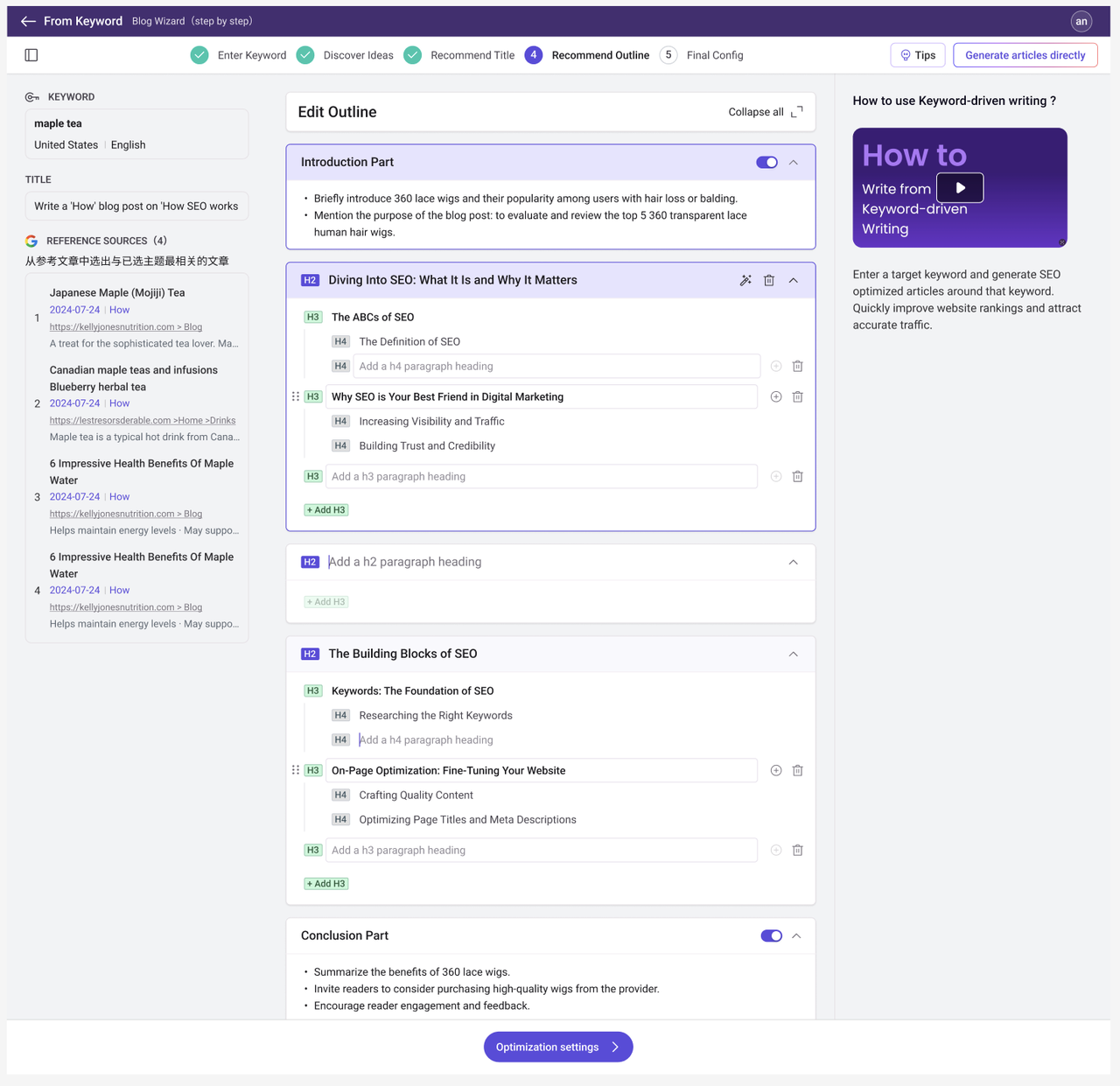Why is Outline so important for writing?
Why is Outline so important?
In blog writing, the importance of the outline cannot be ignored. It is not only crucial for traditional writing methods, but also plays a key role in AI-assisted writing. The outline is the skeleton of the article, providing clear structure and direction for writing. A well-crafted outline can help authors organize their thoughts, ensure logical coherence and complete content in the article. This is particularly important for blog writing. In the era of information explosion, readers' attention is becoming more and more dispersed, and a well-structured and focused article is more likely to attract and retain readers. In the AI era, the importance of outlines is even more prominent when it comes to AI-assisted writing. Although AI language models can generate fluent text, they often lack the long-term planning and overall control ability of human authors. By providing a detailed outline, we can guide AI to generate content that is more in line with expectations, ensuring the focus of the article and avoiding deviation from the theme or irrelevant details. In addition, outlines can help us better utilize the advantages of AI. For example, we can use each key point in the outline as a separate prompt for AI to elaborate on separately. This method not only ensures the coherence of the content, but also fully utilizes AI's advantages in short text generation to improve writing efficiency.
What should be written in Outline?
When writing a blog introducing professional knowledge, the structure of the outline is crucial. A well-designed outline can not only help you organize your content, but also ensure that your article is logically clear and comprehensive. Here is an example of an outline suitable for introducing professional knowledge blogs.
Title and subtitle
Main title: Concisely summarize the theme of the article to attract readers' attention. Subtitle: Further explain the specific content of the article or provide additional context.
Introduction
Background introduction: Briefly introduce the professional field to be discussed, explain its importance and relevance. Article purpose: Clearly state the purpose of the article, that is, what knowledge or skills readers will gain from it. Engage readers: Use an interesting fact, statistical data, or question to attract readers to continue reading.
Body portion
Basic concepts
Definition and Explanation: Detailed explanation of the basic concepts and terms of professional knowledge. Historical background: Briefly introduce the historical development and important milestones of this field.
Main content
Core Theory: Introduce the core theories and principles of this professional field. Key technologies or methods: a detailed description of the main technologies or methods used in the field. Steps or processes: explain step by step how to apply these techniques or methods. Examples and case studies: Provide examples or case studies of practical applications to help readers better understand.
Application and Impact
Practical application: Discuss the practical application scenarios of this professional knowledge. Impact and Benefits: Analyze the impact and benefits of this knowledge on the industry or society.
Transition paragraph
Summarize the previous text: Briefly summarize the content discussed earlier and transition to the next main part. Introduce new content: lay the groundwork for the following content and maintain the coherence of the article.
Conclusion
Summary points: Reiterate the main points and conclusions in the article. Future Outlook: Discuss the future development direction or potential research topics in this field. Call to action: Encourage readers to take the next step, such as further learning, applying knowledge, or participating in discussions.
References and appendices
References: List all the references cited in the article to ensure the reliability and authority of the information. Appendix: If necessary, additional charts, data, or detailed information can be provided in the appendix section.
How QuickCreator Helps You Write a Good Outline
QuickCreator will use fine-tuning models to help authors read excellent online content, and then recommend better outline structures based on the general direction of writing and writing style .
